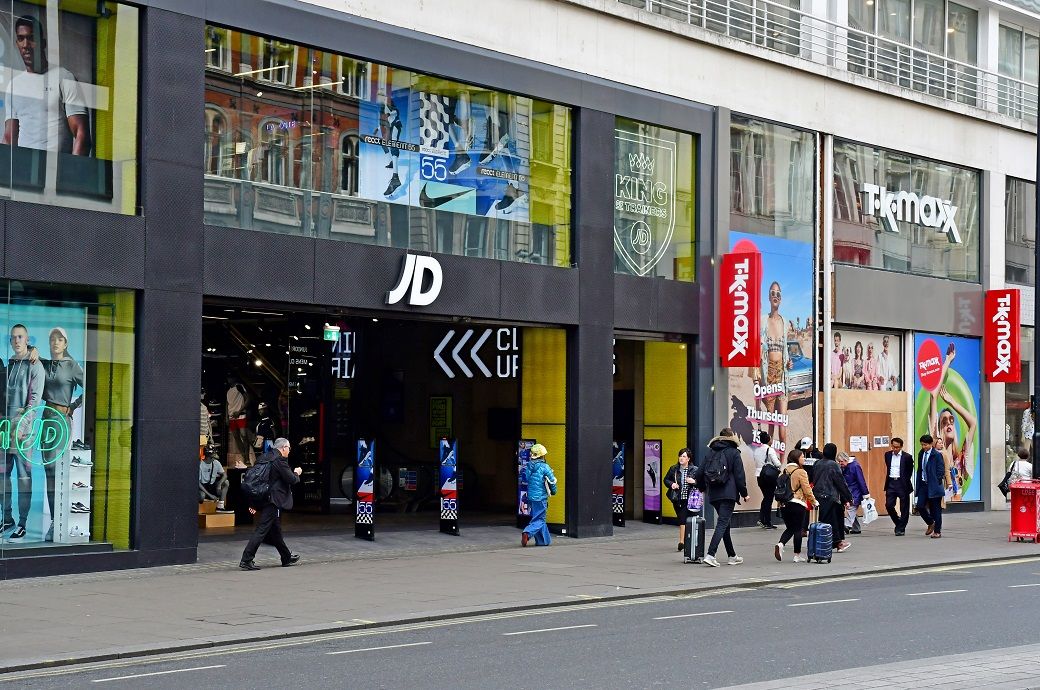
JD Sports has posted resilient second quarter (Q2) fiscal 2026 (FY26) results, with improved like-for-like (LFL) sales in North America but softer performance in Europe and the UK due to tough comparatives from Euro 2024.
Apparel drove growth, while footwear slowed as key product cycles ended. The group maintained strong trading disciplines, managing pricing and gross margin effectively, particularly online.
In Q2 (13 weeks to August 2), group sales reached £3,106 million (~$3,615 million), down 3 per cent on a LFL basis but up 2.2 per cent organically. JD fascia delivered £1,968 million (~$2,292 million), with LFL sales down 3.9 per cent but organic growth of 2.8 per cent. Complementary Concepts grew modestly (+0.4 per cent LFL, +3.6 per cent organic), while Sporting Goods & Outdoor fell 1.6 per cent LFL, the company said in a financial release.
“We are making strong progress in developing our omnichannel customer proposition, store footprint and supply chain, and we are controlling our costs and cash effectively. I am proud of all our teams across the globe for their energy and focus against tough trading conditions. For Q2, in North America we saw an improved performance following the deferral of several product launches from Q1, along with stronger sales trends in apparel and online. In both Europe and the UK, we were annualising tough comparators from the Euros football tournament last year, but still saw a good underlying performance in apparel and from newer footwear lines,” said Regis Schultz, CEO, JD Sports Fashion.
Group gross margin in H1 declined by 40bps excluding acquisitions, or 60bps including Hibbett and Courir, mainly due to controlled online price investments. Inventory levels remained aligned with expectations. Global JD like-for-like sales fell 3 per cent, though organic growth was positive at 3.7 per cent, with a net 42 new stores added.
For H1 (26 weeks), group sales totalled £5,940 million (~$6,912 million), down 2.5 per cent LFL but up 2.6 per cent organically. JD fascia was the strongest contributor at £3,673 million (~$4,277 million), down 3 per cent LFL but up 3.7 per cent organically. Complementary Concepts recorded £1,568 million (-2.5 per cent LFL, +1 per cent organic), while Sporting Goods & Outdoor edged down 0.8 per cent organically at £699 million.
Strategic progress was marked by major operational milestones: DTLR and Shoe Palace assumed operations of 198 City Gear stores, a new JD/Finish Line e-commerce platform went live, and Shoe Palace’s Morgan Hill distribution centre opened, JD’s first multi-fascia hub in the US. In Europe, the Heerlen distribution centre remains on track to introduce automation. JD also opened new flagship stores in Manchester, Las Vegas, Vancouver and Melbourne, with 22 Finish Line conversions in North America.
Looking ahead, JD expects to deliver FY26 profit before tax and adjusting items in line with market forecasts, though it continues to assess potential indirect impacts from US tariffs.
The group noted its historical profit skew toward H2, which is expected to account for around 60 per cent of PBTAI. Guidance also factors in a non-cash mark-to-market charge of about £14 million (~$16.30 million) in H1, tied to FX hedges, with H2 set to benefit from Hibbett synergies.
“Across our regions and fascias, in general we see a resilient consumer, albeit very selective on their purchases. We therefore remain cautious on the trading environment going into H2. We are well placed to continue growing our market share in the key growth regions of North America and Europe, and confident about the medium-term growth prospects for our industry. Reflecting this, we are reaffirming our commitment to enhanced shareholder returns, and announcing today a new £100 million (~$135 million) share buyback following the successful completion of the first £100 million programme last month,” Schultz added.
ALCHEMPro News Desk (HU)
Receive daily prices and market insights straight to your inbox. Subscribe to AlchemPro Weekly!